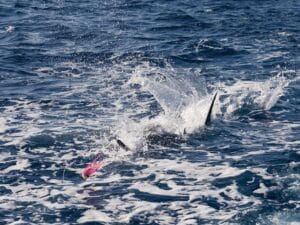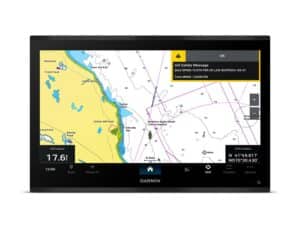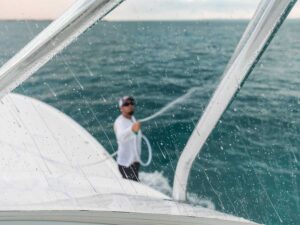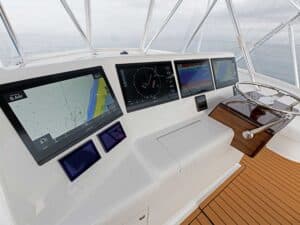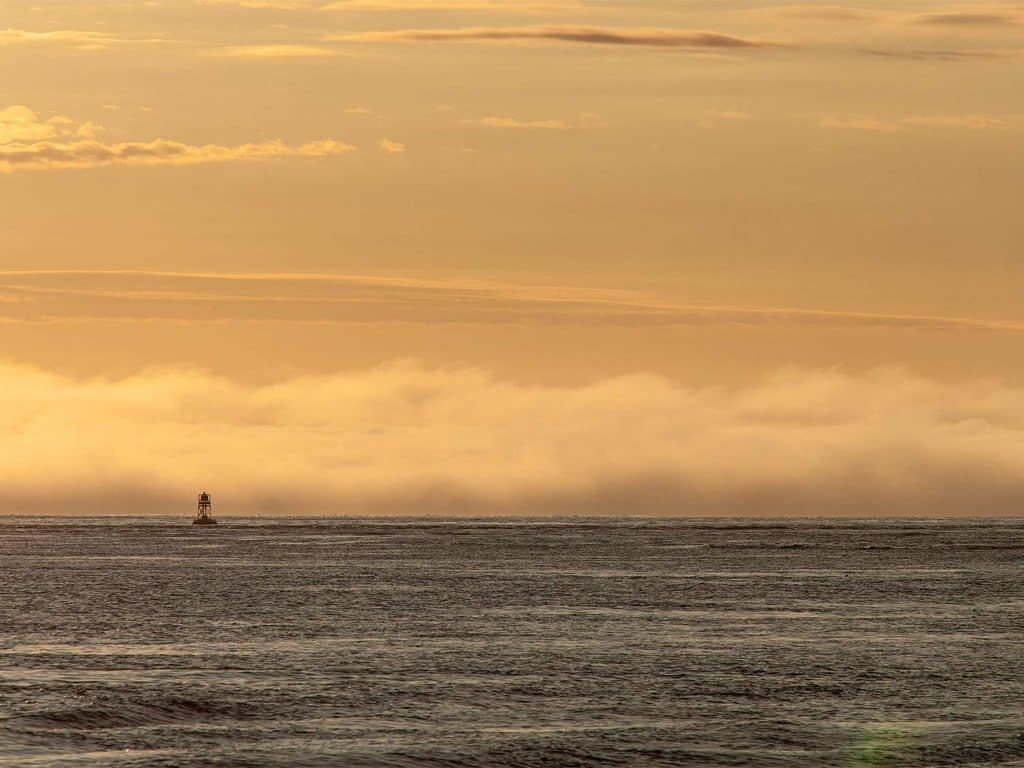
We are always searching for ways to make our low-visibility and nighttime travel easier—not only on our eyes, but also on our psyche. The stress captains go through when moving the boat from point A to point B during the day is nerve-racking enough, but add low-viz conditions such as heavy rain, fog or darkness, and the pucker factor goes through the roof. Using a combination of equipment specifically designed to “see in the dark” makes that stress level a little more livable, so why not look into the new and improved ways of making our lives easier?
While on an overnight shift from Key West, Florida, to Isla Mujeres, Mexico, I was able to track various cruise ships in the Gulf of Mexico and adjust course with minimal changes miles before the ships were even within eyesight. The targets showed on the radar at long range, but as they came within range of the automatic identification system, the vessel name, destination, course and speed populated as well. This combination, coupled with a thermal camera to look for floating debris, allowed us to chug overnight while staying safely informed of our surroundings even in pitch-black darkness.
Radar
No other piece of equipment covers as much usable viewing range as the radar. For the average sport-fisher over 45 feet, the most popular choice is a 25 kW, 6-foot array unit. This combo is capable of a 96-nautical-mile range, and is hands-down the most useful low-visibility tool in the arsenal. Other vessels do not need any type of equipment for you to see them; landmasses, range and day markers are easily detected.
The downfall with this type of radar is heavy rainfall and rough seas. Dense rain squalls and storms or big seas can often hide targets within them, making it dangerous when stuck in persistent heavy weather. All radars have a control to tune down these types of conditions, but radars are infinitely more precise with calm weather and clear skies.
Recent additions to the radar field are solid-state radars, which replace the magnetron unit with broadband transmitters that have some built-in benefits such as lower power usage, Doppler processing, increased sensitivity, no warm-up time, and a much longer run-time life than magnetron units. This technology lends itself to better resolution at close range and can automatically highlight targets that are moving, presenting targets such as vessels or storms in a different color than stationary objects.
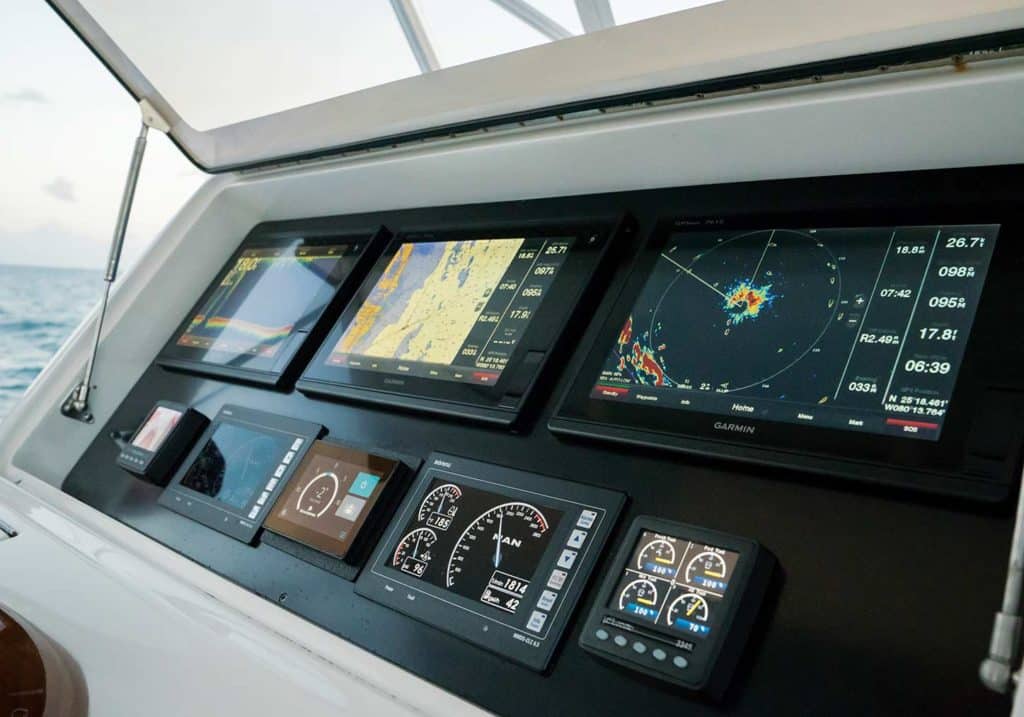
AIS
While radar’s line of sight can be affected by weather, AIS is not because it is radio-based. This allows you to see vessels around a bend in the waterway or on the other side of an island. Not only do you see the vessel as a target on your radar or overlaid on your plotter, you also have the benefit of knowing the ship’s name, course and speed.
No technology is devoid of weakness. Regulations mandate the use of AIS on large ships, but smaller vessels are not required to use it. Many sportboats integrate the technology with their electronics suites, typically using Class B transponders. The recently produced Class B+ units are a nice improvement over the standard Class B units, with the B+ providing a higher-output wattage of 5 watts versus 2 watts, and an improved priority to allow them to work better with Class A units, essentially giving Class B+ users a longer range and a higher update frequency while underway. Anyone who is looking for an easy and low-cost upgrade should seriously consider switching from Class B AIS to Class B+. Since the infrastructure is the same, the main unit would be the only necessary change.
Read Next: Omnidirectional sonar is a game changer, if used correctly.
Thermal Cameras
The ability to back up your virtual information with a thermal camera will give you real-world confirmation of what is truly out there and not some random, disappearing target. Relying on targets and icons onscreen is necessary for long-range cruising or traveling, but up close, thermal cameras give you the confidence of enhanced human eyesight.
Over the years, sensor and stabilization upgrades have continued to make them more useful than ever, even during the daytime. Many of the midlevel and larger units couple the thermal camera with a color camera, which is called dual payload. The second camera will often aid in low-light viewing and can offer a much higher zoom capability, even rivaling some binoculars in range.
The thermal camera gives you the ability to see contrast in heat, which is incredibly useful during nighttime travel. Floating debris in the water that would be invisible to the naked eye at night, or even in daytime glare, displays in bright contrast against the water.
As manufacturers further integrate thermal cameras with plotters, we expect to see improved targeting assimilation. Some have already merged augmented reality by showing marker and vessel information overlaid on the video display.
Whenever planning a build or refit, evaluate the usefulness of these items, and then budget accordingly. The talk around the dock might often be of sonars, transducers, sounders and other ways of locating fish, but in reality, the means by which we safely travel to and from the fishing grounds is arguably just as—if not more—important.
